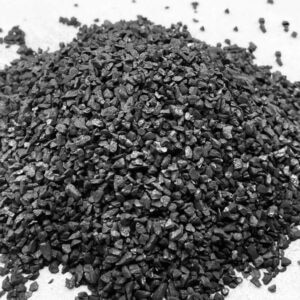Calcined anthracite coal plays a crucial role in modern metallurgy and casting, but many buyers still wonder: is it really worth using over traditional carbon sources?
Calcined anthracite coal is widely used as a carbon additive or recarburizer in steelmaking, foundry, and electrode production due to its high fixed carbon content, low sulfur, and low volatility.
For industries looking to improve molten metal purity and carbon content efficiency, understanding the benefits and applications of calcined anthracite coal is essential.
Why is Calcined Anthracite Coal Preferred in Steelmaking?
Struggling with unstable carbon levels in molten metal or excessive impurities in your casting process? You’re not alone—many manufacturers face this challenge.
Calcined anthracite coal is preferred because it provides high fixed carbon (up to 95%), low sulfur (<0.25%), and low ash content—ideal for clean, efficient carburization in steel production.
How Calcined Anthracite Coal Works in Industrial Applications
I’ve worked with dozens of steel mills and foundries across different markets—from Southeast Asia to Europe. When customers switch to calcined anthracite coal, they often report better carbon recovery rates, reduced slag, and more stable furnace conditions.
Let’s explore its common applications and benefits:
Common Applications
| Industry | Application | Benefits |
|---|---|---|
| Steelmaking | Carbon additive | High carbon recovery, low sulfur |
| Foundry | Recarburizer | Clean melt, consistent grain structure |
| Graphite electrode | Raw material base | Low ash, excellent conductivity |
| Aluminum smelting | Reducing agent | Stable chemical properties |
🔬 Chemical Advantages
- Fixed Carbon (FC): 90%–95% depending on grade
- Sulfur (S): Max 0.3% or lower for premium grades
- Ash: As low as 4% in high-purity grades
- Moisture & Volatile Matter: <1% for optimal performance
This material is highly customizable by size and spec. For example, some customers prefer 1–5mm for ladle additions, while others use 0–3mm for higher reactivity.
Here’s the real-world impact:
One of our European customers reduced sulfur rejections by 40% after switching from coke-based carbon raisers to our calcined anthracite coal. Their carbon recovery increased by 8%, saving both cost and time.
If you’re comparing it with other carbon sources like recarburizer or graphite petroleum coke, calcined anthracite offers superior purity at a better price-performance ratio for many applications.
Conclusion
Calcined anthracite coal offers high carbon content, low impurities, and consistent performance—making it ideal for steelmaking and foundry operations.
Call to action
Ready to upgrade your carbon additive supply?
Contact us now for samples, pricing, or specs tailored to your needs:
📧 Email: [email protected]
📞 WhatsApp: +86-18202528603
We deliver globally, with flexible MOQ and fast lead times. Let’s talk today!


